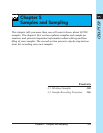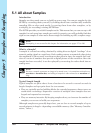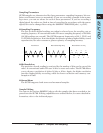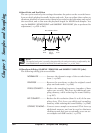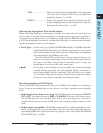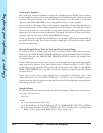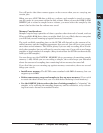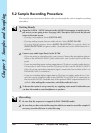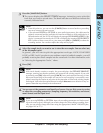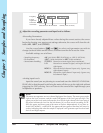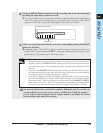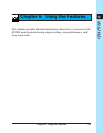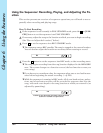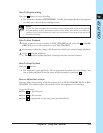
Chapter 5 Samples and Sampling
156 Chapter 5 Samples and Sampling
5.2 Sample Recording Procedure
The step-by-step instructions below take you through the entire sample-recording
procedure.
Getting Ready
1.
Open the SYSTEM | SETUP job and set the AUDIO IN parameter to match your in-
put source you are going to use. (See page 302.) Then press [OK] to exit the job and
return to the main screen.
· If using a microphone: Set to AUDIO IN=MIC.
· If using analog output from an audio device: Set to AUDIO IN=LINE.
· If using digital output: Set to AUDIO IN=DIGITAL (if coaxial cable) or
AUDIO IN=OPTICAL (if optical cable). [Available only if the AIEB1 board is in-
stalled.]
2.
Connect your audio input line(s) to the SU700.
· If you are using a microphone for your source: Connect the microphone plug to
either of the ANALOG INPUT jacks (either the L jack or the R jack) on the rear
panel.
· If you are recording stereo analog output from a CD player or similar audio device:
Connect the L and R lines from the CD player to the L and R ANALOG INPUT
jacks. (If you are recording a monaural signal, connect the line to either of the L or
R ANALOG INPUT connectors.)
· If you are recording digital output from a CD player or similar audio device: Con-
nect the coaxial or optical cable to the DIGITAL IN or OPTICAL IN connector on
the rear of the SU700. (Available only if the optional AIEB1 expansion board is in-
stalled).
After making the connection, switch the audio device on.
3.
To be sure the system is set up correctly, try supplying some sound. Confirm that you
can hear the sound on your headphones or speakers.
Recording
1.
Be sure that the sequencer is stopped (in PLAY STANDBY mode).
2.
Be sure that you have selected the song into which you want to record the sample. If
necessary, turn the dial now to select the song.




